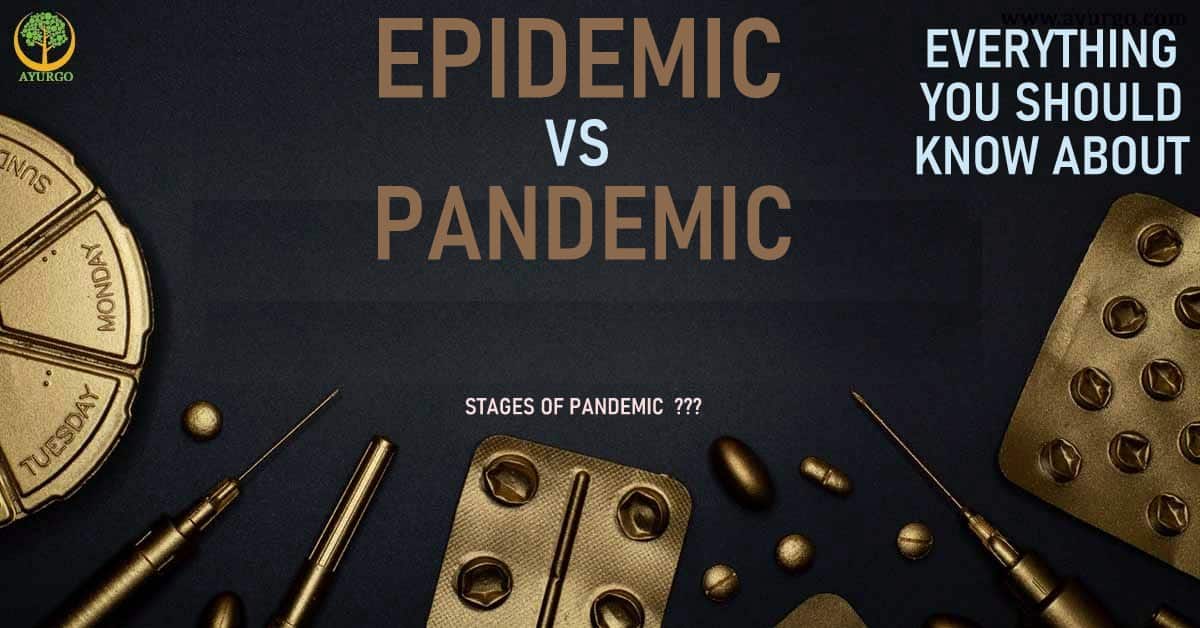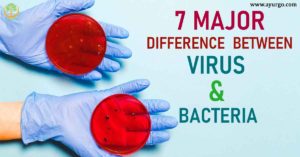Table of Contents
As we are all aware, a global Pandemic is underway and it is affecting millions worldwide.
Everywhere around us we hear the words Pandemic and Epidemic.
What do these words mean?
We will try to understand these terms one by one and see how relevant they are in our current scenario.
Epidemic Definition
The center for Disease Control, Atlanta, defines an Epidemic as the occurrence of more cases of diseases, injury, or other health conditions than expected in a given area or among a specific group of people during a particular period.
Usually the cases are presumed to have a common cause or to be related to one another in some ways.
In simple words, an Epidemic is a rapid spread of a disease to a large number of people in a given population within a very short period of time.
The important points to pay attention in this definition are RAPIDLY SPREADING DISEASE which involves a LARGE NUMBER OF PEOPLE and in a SHORT PERIOD OF TIME.
The word itself traces its origin from Greek words EPI meaning UPON and DEMIC which comes from the word DEIMOS, which means PEOPLE.
When an Epidemic has spread across a large region, for example, multiple continents, it is called a PANDEMIC.
How does Epidemic Begin?
Although it is very difficult to explain the exact mechanism of how and when Epidemics start, we can broadly divide them into three main types.
Types of Epidemics
- Common source Epidemics
- Propagated epidemics
- Mixed outbreak epidemics
Common Source Epidemic
In a common source epidemic, a group of people gets infected from a common source of infection.
For example, suppose a bunch of people ate at a restaurant and the food of that restaurant was infected with staph bacteria toxin.
Note that, food poisonings are not caused by the bacteria itself, rather the toxin that is produced by this bacteria. The bacteria itself gets destroyed by the cooking process.
Now, all these people developed food poisoning and this is an example of a common source epidemic.
These infected people cannot transmit the infection further to more people as food poisoning was caused by a toxin in the food and not the actual bacteria itself.
This is important, as our next type of epidemic, Propagated epidemic differs in exactly this point.
Propagated Epidemic
In a Propagated Epidemic, a similar scenario can occur.
A group of people went to a restaurant and rather than getting infected by eating contaminated food, suppose they all get a virus from the person who was serving the food to all these people.
Now the basic difference between common source Epidemic and Propagated Epidemic is that, in the case of a propagated epidemic, these infected people can further infect more people.
One infected human transmits the virus to another healthy human and so on.
In this manner, the number of cases grows exponentially within a few weeks and this is why it is known as a Propagated Epidemic.
Mixed Outbreak Epidemic
Mixed outbreak Epidemic has characteristics of both common source and propagated outbreaks.
So this was about how Epidemic starts and how they propagate and that is what makes an Epidemic so dangerous.
Its ability to affect more and more people as time progresses and that brings us to our next important question which is:
How epidemic spread from one person to another?
There are numerous ways a disease can spread; some of the most common ways are:
- Airborne transmission
- Arthropod transmission
- Contact transmission
- Feco-oral transmission
Airborne Transmission
Airborne transmission is the spread of infection by droplet nuclei or dust in the air.
Whenever an infected person coughs or sneezes, small droplets of water are released in the air.
These small particles contain millions of viral particles, these water particles are known as droplets if they are more than 5 micrometers in diameter and droplet nuclei, if they are less than 5 micrometers in diameter.
Droplets that are larger in diameter fall rapidly to the ground under the influence of gravity and therefore are transmitted only over a limited distance of less than 1 meters.
Droplet nuclei, on the other hand, are less than 5 micrometers in diameter and hence can remain suspended in the air for significant periods of time and can be transmitted over distances greater than 1 meter.
These droplet nuclei are then inhaled by another person which gets infected by the virus.
Arthropod Transmission
Arthropod transmission takes place by an insect, for example, the malaria Epidemic, which was spread by mosquitoes.
Contact Transmission
Contact transmission is a mode of transmission when the infection spreads from one person to another by mode of touch.
Feco-oral transmission
In the feco-oral transmission, the infectious virus is shared by the infected host in feces and acquired by the susceptible host through the ingestion of contaminated food or water.
It is important to know that not all people who get infected in an epidemic get sick. And they can sometimes still pass on the infection to other people.
However, people who have immunity are able to resist infections, to know more about immunity and how it protects you from infections, and diseases, you can read this article by clicking here.
Pandemic
All of us are aware of the global crises we are facing today,
You may be hearing statements like; your country is in stage 2 of the Pandemic or stage 3 of the Pandemic.
What are the stages/phases of a Pandemic?
World Health Organisation closely studied previous epidemics and classify the progression of Epidemics into five main stages.
According to WHO,
STAGE 1 consists of predominantly animal infections and a few human infections.
STAGE 2 is said to have reached when there is a sustained human to human transmission
STAGE 3 is when a widespread human infection is seen in the form of whole communities being involved.
This is the Pandemic stage where the number of cases are exponentially increasing.
STAGE 4 is the post-peak stage which signifies that the Pandemic activity appears to be decreasing.
STAGE 5 or the post-pandemic stage is said to have reached when the disease activity level reaches the level of seasonal flu.
At this stage, it is important to maintain surveillance and be prepared for future epidemics.
Epidemics have been a part of human history since the beginning of time.
From Plague to Cholera to HIV to the current scenario.
Millions have suffered, recovered, or died.
Kindly follow your local guidelines and stay safe.
If you liked the article, do share it with your friends and family and share your valuable comments in the comment section below.





Pingback: SARS virus 2003| Lessons we should have learned from it
Hey very nice blog!|a very clear explanation of epidemic vs Pandemic
I am glad that you liked it.